Happy Thursday, happy pie season! Today I really wanted to give you a primer, a deep dive, a step by step guide on making flaky pastry. The type of pastry you might use to make a classic fruit pie, something so flaky it’s effectively a sibling to puff pastry (but way easier to make). This is a recipe I’ve been using for many years and have tinkered with many many times, it makes perfect pies and has great flavour and most importantly incredible texture.
Making the pastry is not difficult and needs no special equipment; it does require a little bit of time and lots of rolling out, but you are rewarded with a very special pastry. If you read this and only take away one piece of advice, let it be this; To make a great flaky pastry the key is to keep everything cold. Heat is the enemy of flaky pastry, so if you’re ever worried it’s too warm, throw it in the fridge for a short rest. But let’s back it up, what is flaky pastry.
With pastry you have many different styles but they can be divided into two very board categories, flaky and biscuity. The key difference between the two (beyond ratio of butter to flour) is how the butter is combined with the flour. For biscuity pastry (think pate sucree/sweet pastry) the butter is worked into the flour so that a uniform dough is made, there are no chunks of butter, just an homogenous mixture. In a flaky pastry the opposite is true, the butter is left in large pieces creating a more irregular dough. This is done for one reason, steam. Butter is made up of fat and water. When butter is left in chunks and the pastry is baked, these chunks of butter release steam as the water in the butter heats up, meaning the pastry puffs up and this is how you create flakes in pastry. In biscuity pastry recipes this doesn’t happen so the pastry stays crisp and biscuity. This simple categorisation isn’t exactly perfect, because there any many styles of pastry and recipes for them fall somewhere on the spectrum between flaky and biscuity, but it does help us understand what we are aiming for.
If butter is the key to flakiness then let’s talk ratios. With puff pastry, the ultimate flaky pastry, it is often 1:1, the same amount of flour as butter. With this pastry it is 6:5 so still a LOT of butter but just a little less than a classic puff. The second thing to understand is the difference in the way the butter is worked into the pastry. Puff pastry is many many alternating layers of butter and pastry so that you have a very ordered product that should puff to create very even layers. The method for puff pastry creates a pastry with an incredible amount of layers and which is so flaky that it is almost delicate, the layers of pastry are thin and shatter with minimal pressure, not exactly what we want in a classic fruit pie. With a flaky pastry, like this one, the butter is not neatly layered, the butter is mixed with the flour so the layers in the finished pastry are less delicate and less even, it makes a pastry that is incredibly flaky but also a bit more robust. So how do we make it?
COMING TOMORROW FOR PAID SUBSCRIBERS
PEACH AND BLACKBERRY PIE
Ultimate Flaky Pastry
400g plain flour
1 tsp fine sea salt
2 tbsp caster sugar
335g unsalted butter, diced and chilled
2.5 tbsp vodka (or other strong alcohol)
8 tbsp ice cold water
The first step is to consider the environment you are working in. If you are making this at the height of summer and your kitchen is warm you can take the added precaution of, not just chilling your butter and water but, chilling all of the ingredients and even the bowl you are going to use. Remember the cold is your friend when making pastry.
Add the flour, salt and sugar to a large bowl and use your hands to mix everything together. If you are making the pastry for something savoury and are considering removing the sugar I would urge you to only reduce the sugar not remove it entirely. The sugar helps with the browning of the pastry and the pastry is not sweet so I feel it is worth keeping.
Add the butter and toss it in the flour so it is all coated in flour, this prevents the pieces of butter from sticking to each other. Using your fingertips, press each piece of butter into a flat flake. This is the starting point for turning the butter into layers within the pastry. Once all of the butter has been pressed flat, very briefly rub the butter into the flour, just to combine the butter with the flour a little further. You are not looking to create a breadcrumb like texture or anything even close, you want to end up with a bowl of flour and lots of large flat pieces of butter. At this point you've been handling the butter a lot, so pop the bowl in the freezer for 10 minutes.
At this point we will add in our liquid ingredients so lets briefly talk about alcohol. This tip is not mine, it has been around for many years (I believe since at least the 50’s but it was popularised in Cooks Illustrated in the early 2000’s), but it is worth explaining if you are wondering why on earth there is vodka in the pastry recipe. Gluten is developed when flour and water are present together. In this recipe too much gluten development can make for a pastry that is hard to roll out, can shrink when baked and be tough to eat. To reduce the amount of gluten developed, we could reduce the amount of water used but this would also prevent the dough from holding together, instead we can replace a portion of the water with high proof alcohol, something at least 40% abv. Using vodka is the common alcohol of choice, because it is flavourless and doesn’t change the taste of the pastry. I often use bourbon or rum for the opposite reason, to add a hint of flavour the pastry, to give it a little extra something. The reason this works is that 40% abv alcohol is only 60% water and 40% alcohol, therefore limiting the ability of gluten to develop whilst not at all impeding the ability to hydrate the flour. If you want to skip the alcohol you absolutely can replace it with more water but if you’re new to pastry making it is a great tip that can really help elevate your pastry.
To add the liquid, drizzle in a couple tablespoons at a time and then using your hands to toss everything together. You want to add enough liquid so that it starts to form small clumps and looks less like a bowl of dry flour. Once all the liquid from the recipe has been added I like to tip the flour mixture out onto my work surface and spread it out a little, looking to see if there are any remaining pockets of dry flour. If any dry pockets remain I can drizzle over a little extra water. At this point I use a dough scraped to compress the dough into a rectangle. If the dough is holding together you have another good sign you have achieved the right level of hydration. The rectangle of dough may look a little craggy but that is okay, so long as it doesn’t feel like dry flour, or wet and sticky you are on the right track. Wrap the pastry in clingfilm and, before you transfer it to the fridge, roll it briefly to compress the dough together. Because the dough is wrapped in clingfilm you can’t extend its length or width but a brief rolling helps the dough to hold together as a single piece of dough. Refrigerate the dough for 15 minutes.
This next stage is a type of lamination, a lazy lamination but one that still helps to create a very flaky pastry. On a floured work surface roll out the pastry into a large rectangle. The exact size is not important but you want something that is roughly 6mm-8mm thick. Cut the rectangle of dough into four equal sized pieces and stack them atop each other. Wrap the dough in clingfilm and roll as before, to compress the four pieces together a little. Refrigerate the dough for 15 minutes before repeating this process two more times, refrigerating after every roll out. As you go through this process you’ll see the butter be worked further into the dough, the pieces will become less distinct; this is the process of the butter being worked into thin layers, so that when the pastry bakes it will puff up and become flaky. Successfully getting these layers is why we need to keep the dough cold, if the butter warms up too much it starts to blend with the dough and thee flour absorbs the moisture from the butter preventing it from creating flaky layers. Once the laminating is finished wrap up the pastry and refrigerate it until needed. At this stage you can also freeze it for a couple months.
Tips For Baking
The same rule for making the pastry applies to using the pastry, keep it cold. When rolling the pastry out, you can stop at any time and refrigerate it should you feel it becoming too warm. Once you have rolled out the pastry and used it to form whatever you are making, refrigerating the whole thing is a good idea; this will chill down the pastry and the butter meaning you get a better puff from the pastry than when it is warm.
This recipe is enough to make a double crust pie with a lattice crust. If you don’t want a late crust you can use a little less, making a batch with just 300g flour (reducing the other ingredients to retain the same ratios).
To maximise the flakiness and to retain the best shape from your pastry, I like to start my pies at a higher temperature for a short amount of time before reducing the temp and baking for enough time the pastry is browned and cooked all the way through.





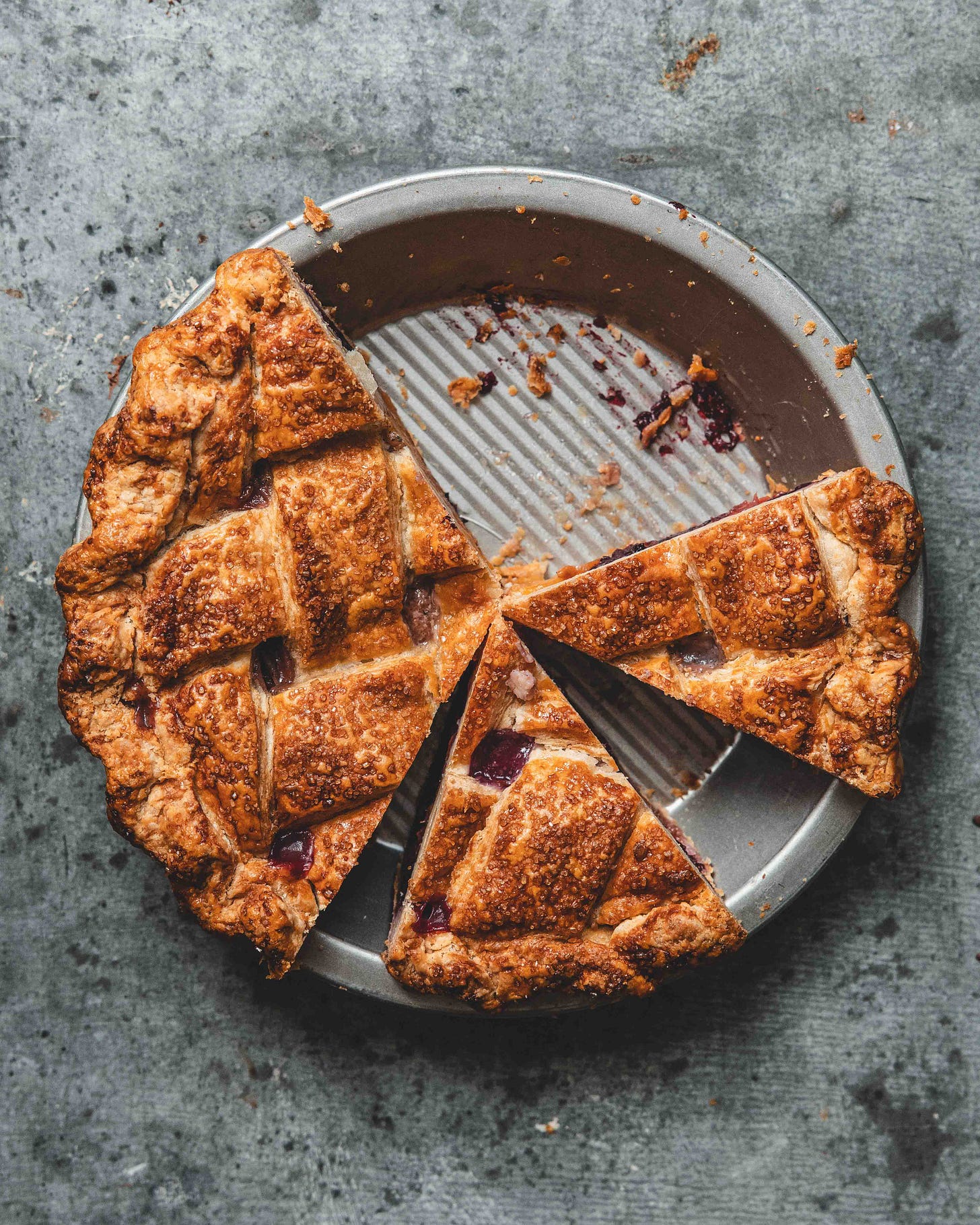
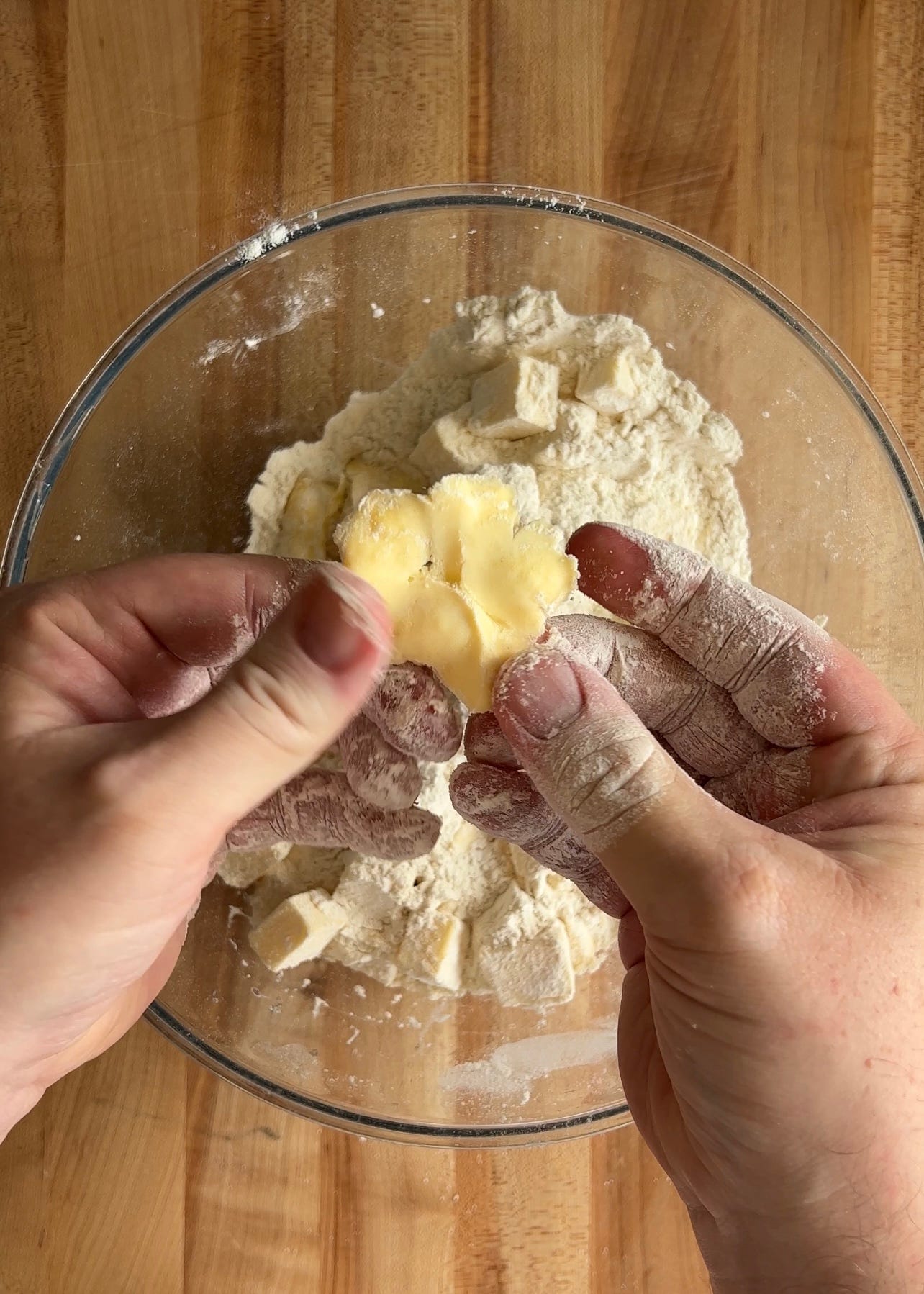
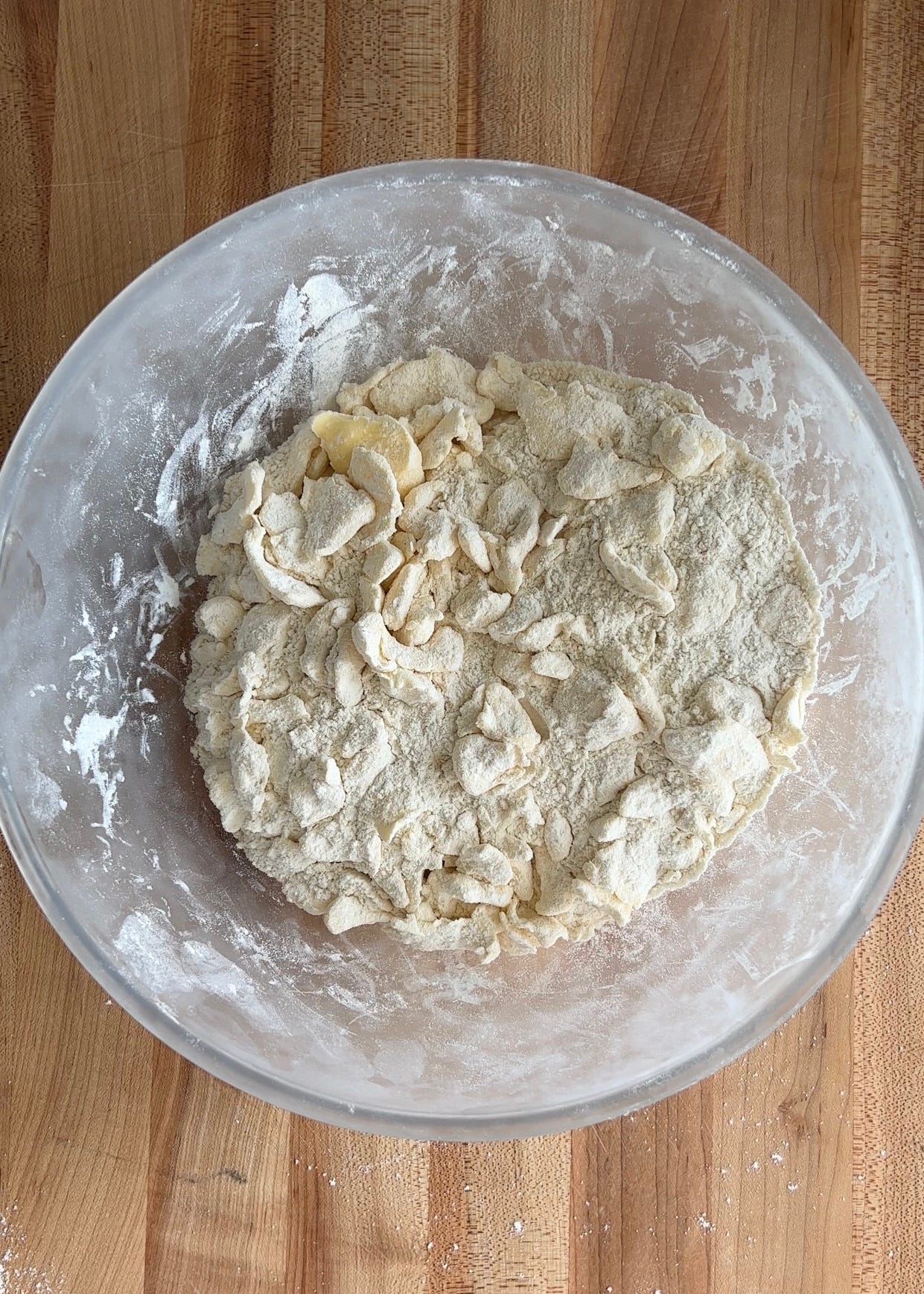
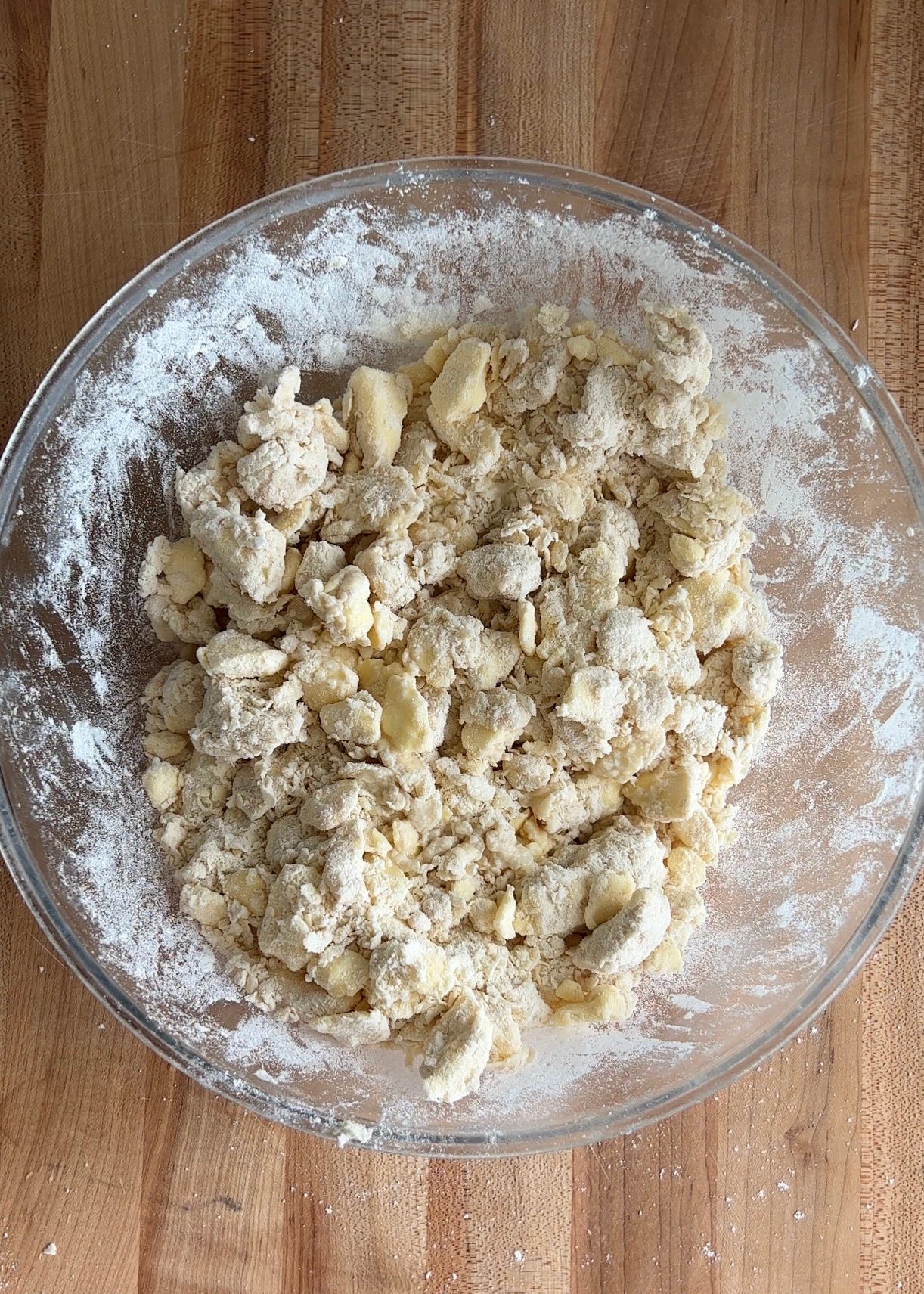
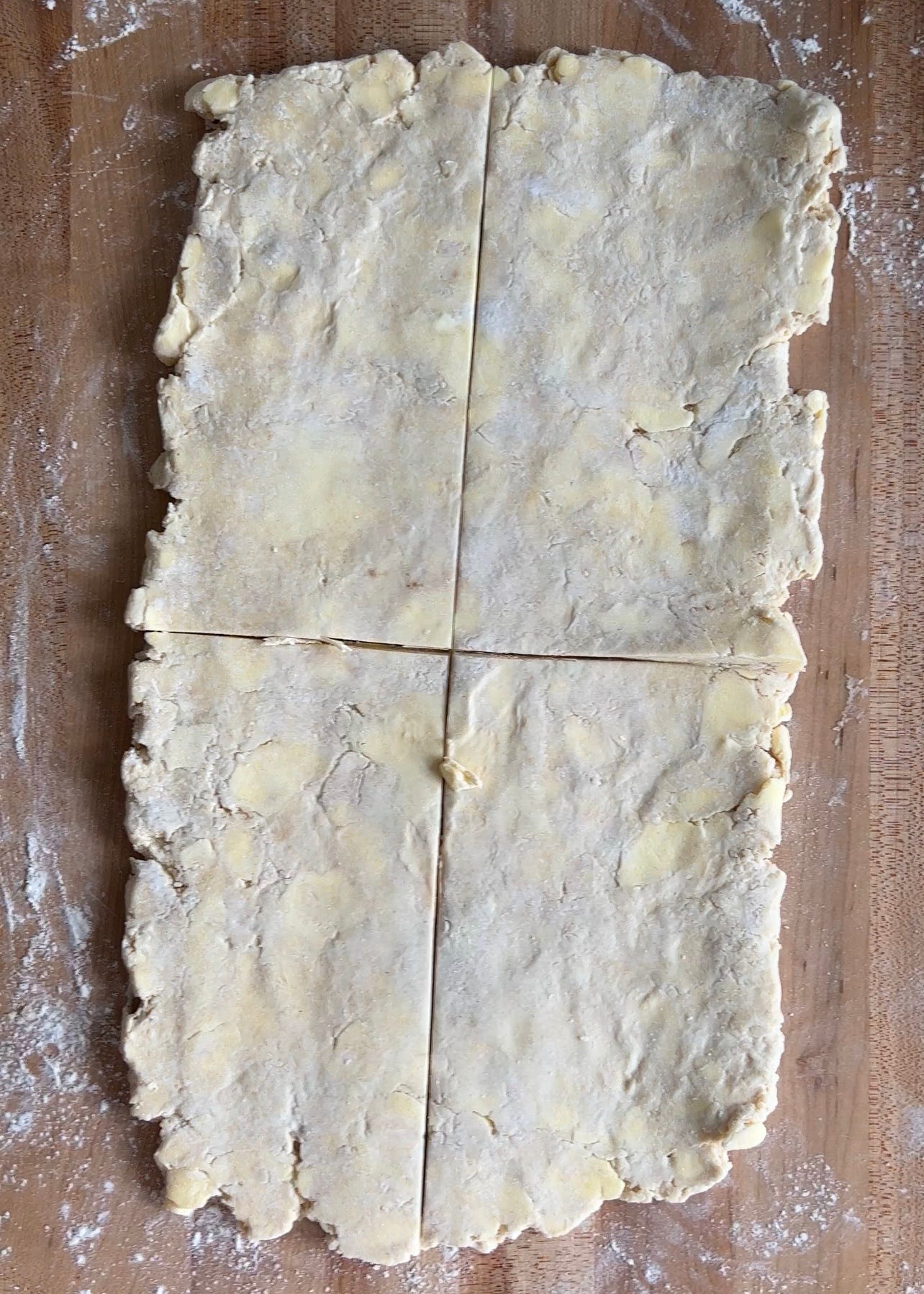
Fascinating. Thanks for sharing. I will try this recipe. And I love the idea of using alcohol as a way to control gluten.
Really flaky, shattering flaking! Really is a cross between puff pastry and pie crust. I did have to add a few more sprinkles of water to the dough in the beginning. Since the lamination process is easy and fast, my dough stayed cool at each step. I halved the recipe, refrigerated 15 minutes after the last roll out, used for a small galette, froze 12 min before baking at 400F at middle lower rack for 35 min and browned the crust more at 410F at highest rack for 4 minutes.